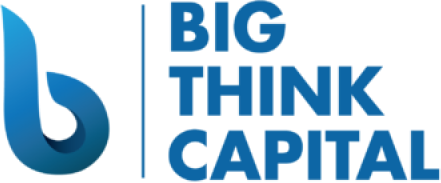Maximizing Small Business Potential: Making Informed Decisions About Working Capital Advances Amidst Rising Interest Rates
Estimated Reading Time: 5 minutes
- Fast funding options help manage urgent financial needs.
- Rising interest rates affect borrowing costs and decision-making.
- Assessing business needs is crucial before seeking financing.
- Exploring multiple financing avenues can yield better outcomes.
- Understanding the total cost of capital is essential for informed decisions.
Table of Contents
- Understanding Working Capital Advances
- The Impact of Rising Interest Rates
- Making Informed Decisions About Financing
- Utilizing Big Think Capital’s Services
- Conclusion
- FAQ
Understanding Working Capital Advances
A working capital advance is a financial solution designed to provide immediate cash flow for small businesses. It allows businesses to access funds quickly without the lengthy application processes typical of traditional loans. These advances can be crucial for managing daily operational costs, purchasing inventory, or investing in growth initiatives.
Key Advantages of Working Capital Advances:
- Fast Funding: Businesses can receive funds within days, allowing for quick response to urgent financial needs.
- Flexible Repayment Options: Repayment is often tied to daily credit card sales or bank deposits, aligning payment schedules with cash flow.
- Less Documentation Required: Compared to bank loans, there is usually minimal documentation, making it easier for small business owners to apply.
The Impact of Rising Interest Rates
In 2025, the Federal Reserve has increased interest rates to combat inflation and stabilize the economy. As a result, businesses seeking financial solutions must adapt to this environment. Higher interest rates affect borrowing costs, potentially making working capital advances more expensive.
Challenges Posed by Rising Interest Rates:
- Increased Repayment Amounts: Higher rates mean that the overall cost of an advance can rise, impacting cash flow.
- Tighter Credit Conditions: Lenders may impose stricter criteria for approval, leading to more intensive scrutiny of creditworthiness.
- Operational Budgeting: Increased borrowing costs may force business owners to reconsider their financing strategies.
Making Informed Decisions About Financing
To ensure you are making the best possible financial decisions, it is essential to understand the implications of working capital advances, especially in a context of rising interest rates. Here are three practical takeaways to empower your decision-making process.
1. Assess Your Business Needs
Before pursuing a working capital advance, critically assess your financial situation and needs. Consider the following questions:
- What specific expenses will the funding cover?
- How urgent is the need for capital?
- What are the expected returns on the investment made possible by this funding?
Understanding your needs helps you choose the right type of financing and, ultimately, the best terms available. It’s essential to align your business goals with the funding amount you seek to ensure it drives growth rather than merely covering operational shortfalls.
2. Explore Multiple Financing Avenues
Despite rising interest rates, many avenues exist for securing working capital. Research different options, including:
- Merchant Cash Advances: As an alternative to traditional loans, merchant cash advances provide flexible terms tied to revenue.
- Lines of Credit: Offering greater control over borrowing, lines of credit can be drawn upon as needed, making repayments less burdensome during slower sales periods.
- SBA Loans: Although these loans can take longer to process, they often offer significantly lower interest rates and longer repayment terms, making them worth considering.
Understanding the similarities and differences between lending options can help you make an informed decision about what suits your business best.
3. Calculate the Cost of Capital
As interest rates climb, calculating the complete cost of capital is more crucial than ever. Here’s how to approach this:
- Effective Rate: Determine the effective annual percentage rate (APR) you will incur, accounting for any fees associated with the advance.
- Cash Flow Implications: Project how the repayments will impact your monthly cash flow, particularly in leaner months.
- ROI Assessment: Calculate the return on investment (ROI) that the funds will generate. This will help you justify the cost of borrowing.
Understanding what your working capital advance will truly cost can aid in evaluating if it is a viable option for your business.
Utilizing Big Think Capital’s Services
At Big Think Capital, we understand that every small business scenario is unique and that rising interest rates can complicate the decision-making process. Our team of funding experts is well-versed in various financing products, including working capital advances, SBA loans, equipment financing, and more.
Our goal is to provide tailored funding solutions that align with your business objectives, ensuring that you make informed and strategic decisions during this challenging financial period.
Conclusion
Navigating the complex world of small business financing has never been more critical, especially with rising interest rates. By understanding the implications of working capital advances, assessing your needs, exploring various options, and calculating the total cost of capital, you can position your business for success.
As you consider your options, remember that informed decision-making is your greatest asset. To learn more about how we can assist you in identifying the right funding solution for your business, visit us at bigthinkcapital.com or speak with one of our funding experts today. Your business deserves a bright financial future, and we are here to help champion it.
FAQ
What is a working capital advance? A working capital advance is a financial solution that provides immediate cash flow without the lengthy application processes typical of traditional loans.
How do rising interest rates affect small businesses? Rising interest rates increase borrowing costs, which can make financing more expensive and force businesses to reconsider their strategies.
What are the advantages of working capital advances? They offer fast funding, flexible repayment options, and require less documentation compared to traditional loans.
How can I assess my business needs for financing? Evaluate specific expenses, urgency of need, and expected returns on investment to align funding with business goals.
What types of financing should I explore? Consider merchant cash advances, lines of credit, and SBA loans among other options to find what best suits your business.






